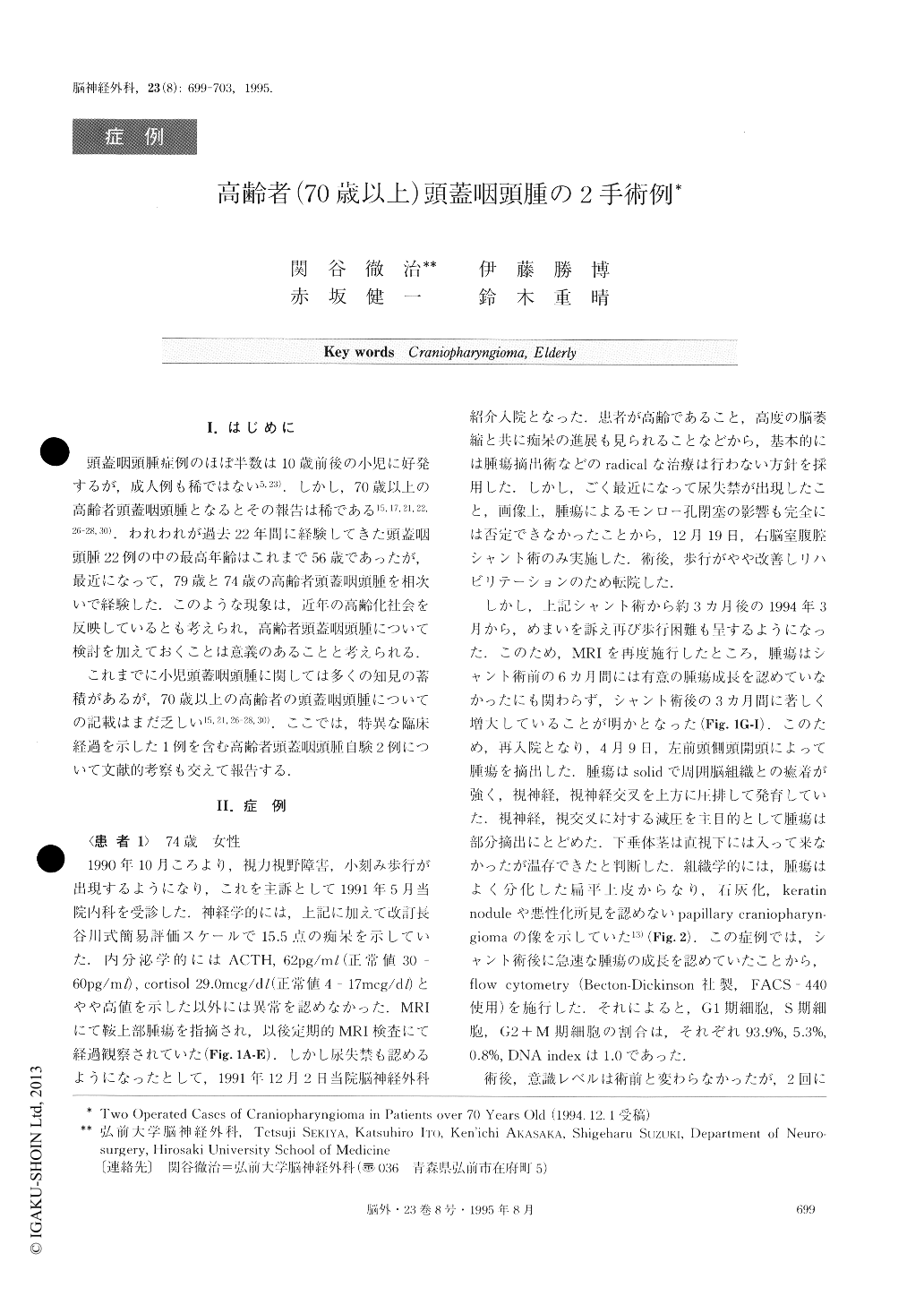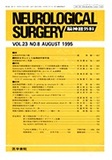Japanese
English
- 有料閲覧
- Abstract 文献概要
- 1ページ目 Look Inside
Ι.はじめに
頭蓋咽頭腫症例のほぼ半数は10歳前後の小児に好発するが,成人例も稀ではない5,23).しかし,70歳以上の高齢者頭蓋咽頭腫となるとその報告は稀である15,17,21,22,26-28,30).われわれが過去22年間に経験してきた頭蓋咽頭腫22例の中の最高年齢はこれまで56歳であったが,最近になって,79歳と74歳の高齢者頭蓋咽頭腫を相次いで経験した.このような現象は,近年の高齢化社会を反映しているとも考えられ,高齢者頭蓋咽頭腫について検討を加えておくことは意義のあることと考えられる.
これまでに小児頭蓋咽頭腫に関しては多くの知見の蓄積があるが,70歳以上の高齢者の頭蓋咽頭腫についての記載はまだ乏しい15,21,26-28,30).ここでは,特異な臨床経過を示した1例を含む高齢者頭蓋咽頭腫自験2例について文献的考察も交えて報告する.
This paper reports two cases of craniopharyngioma in the elderly (over 70 years old). The first case is a 74-year-old woman who was referred to us due to gait and visual disturbance. She was first treated conservatively because she showed signs of dementia, but her tumor grew remarkably and rapidly after placement of a ven-triculoperitoneal shunt and then was partially resected. After two shunt revisions, the patient developed post-operative pneumonia, which became the main cause of her death.
The second case was a 79-year-old female who was referred to us clue to progressive visual disturbance.She was operated on and her tumor was totally re-sected. A bilateral subcluroperitoneal shunt was placed to alleviate postoperative subclural effusion. Postoperatively, her visual field improved remark-ably.
When treating craniopharyngioma in the elderly, it is advisable to choose a conservative approach if applic-able. When a more radical therapeutic approach is taken, it should be borne in mind that preexisting de-mentia and postoperative subclural effusion clue to brain atrophy often preclude the patient's early recovery.

Copyright © 1995, Igaku-Shoin Ltd. All rights reserved.


